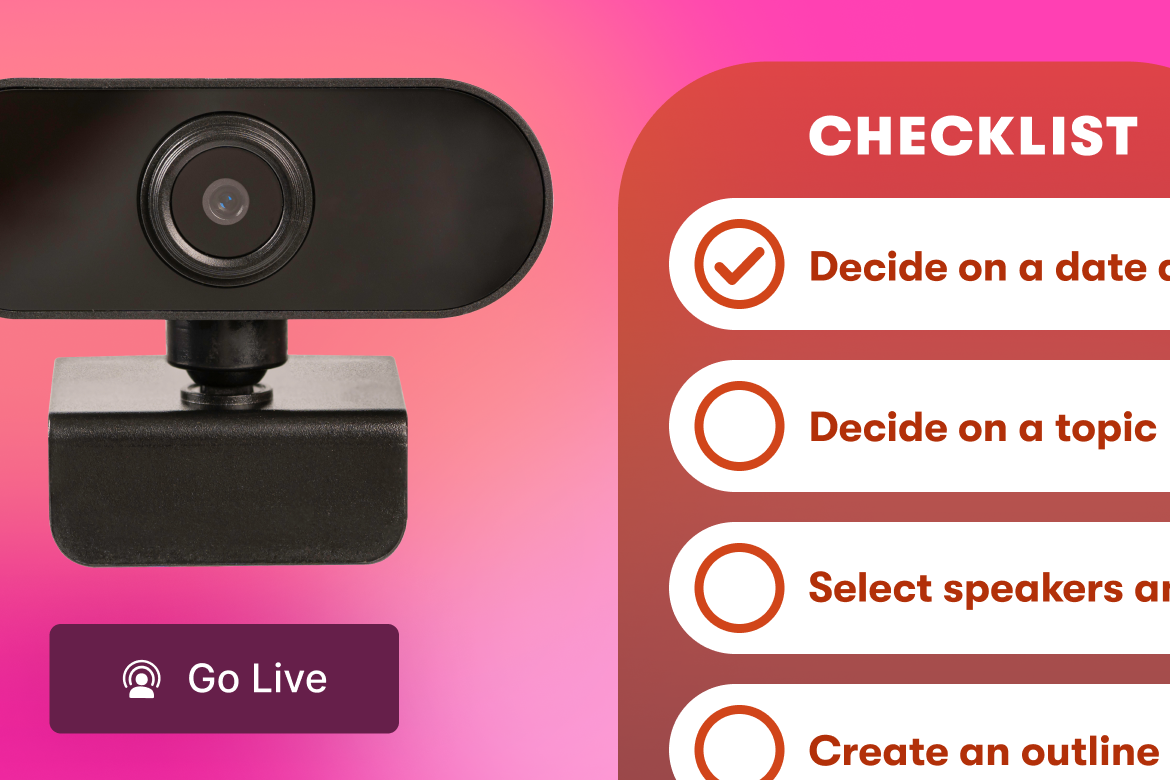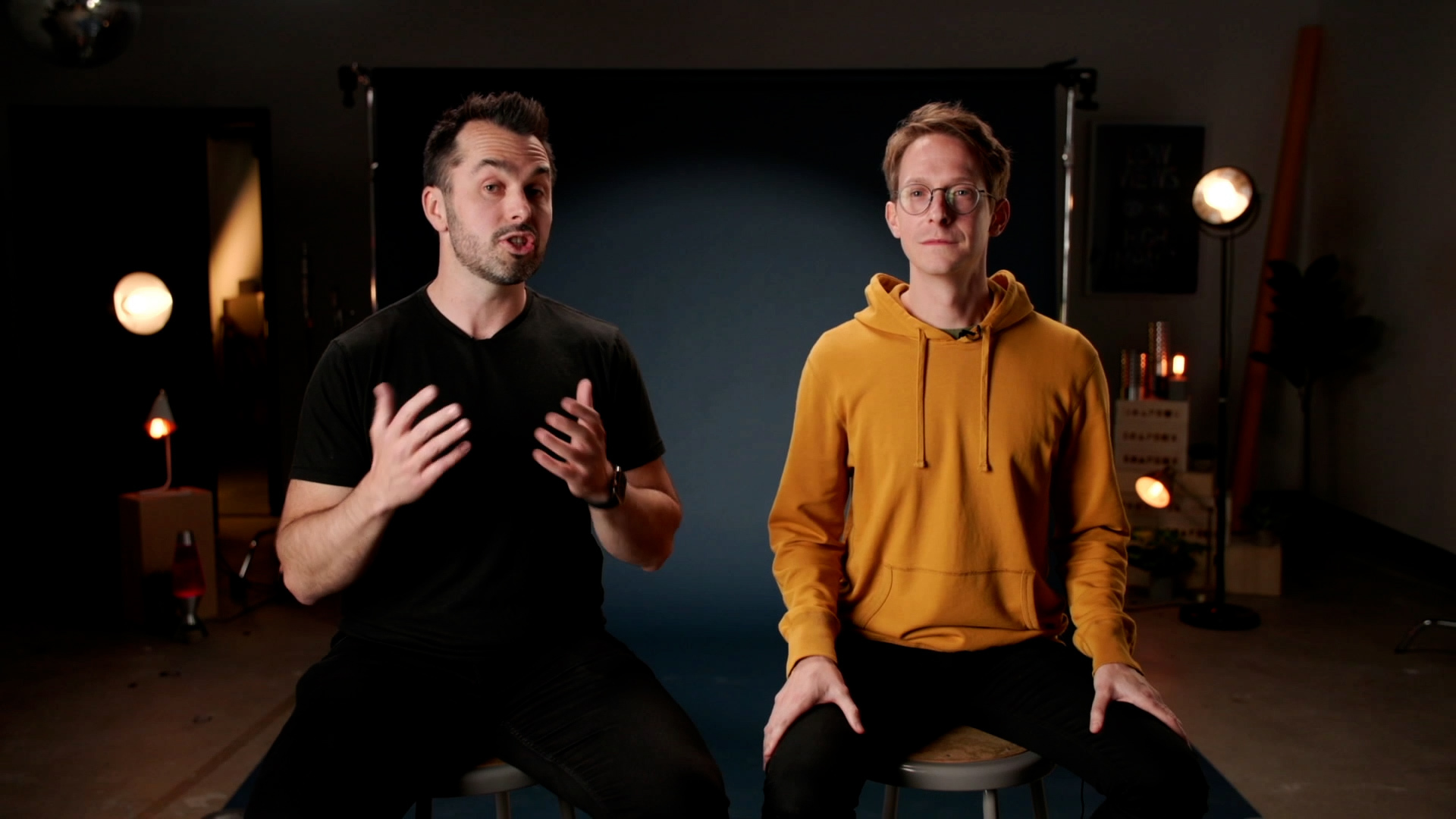Wistia’s Guide to Podcast Gear: Three Setups for Any Budget
February 18, 2021
Topic tags
Adam Day
Creative
If you’ve been thinking about creating a podcast but don’t know what gear you need to get started — I’ve got you covered! As Wistia’s Lead Producer and resident audio nerd, I’m going to break down all of the gear for a basic, intermediate, and advanced podcasting setup.
Whatever your budget might be, let’s take a look at the best gear to fit your audio needs.
Basic podcasting gear setup
A basic setup for recording podcasts is very simple. All you need is a USB microphone, a pair of headphones, and some free recording software on your computer.
The microphone
USB microphones are a great choice because they tend to be pretty inexpensive, sound great for the price, and are easy to use. To get up and running, all you do is plug in a USB cable from your microphone to your computer. One of my personal favorites is the Audio Technica ATR2100X, which is about $100. It sounds awesome, and it’s so easy to use. Plus, it has an XLR output, which is a professional-grade connector on an otherwise budget microphone.
The headphones
Headphones are a must-have for recording. You have to be able to hear yourself, and if you’re in a remote interview situation, you’re going to need to hear your guest. For a basic setup, just use whatever you have around the house. I always use Apple Earpods because they work great and a lot of people already have them.
“Headphones are a must-have for recording.”
Recording software
When it comes to your recording software, if you’re on a Mac you’ve got GarageBand built in — it’s free and super powerful. If you’re on a PC, there are plenty of free options as well. Search for a program called Audacity, which is super popular and functional.
Intermediate podcast gear setup
For an intermediate podcast setup, you’re going to upgrade every single aspect of your signal chain.
The microphone
To upgrade your microphone, you’re going to jump into an entry-level professional-grade microphone like a Shure Beta 58A. With a professional-grade microphone, you’re going to need a USB audio interface. You’ll want to use an XLR cable to connect to something like a Focusrite Scarlett 2i2.
The headphones
Now, let’s talk about listening back. In my intermediate setup, I’ll upgrade to professional quality studio headphones like AKG K240s. These are classic headphones, they sound great, and they’re comfortable to wear over long periods of time.
In an intermediate setup, you’re also going to want to listen back out loud to your podcast so you can make good edit and mix decisions. A good entry-level professional pair of speakers are the JBL 3 Series MkII.
“In an intermediate setup, you’re also going to want to listen back out loud to your podcast so you can make good edit and mix decisions.”
Recording software
To level up your software, you’re going to jump up from the free stuff to professional audio recording software. On a Mac, you’re going to graduate from GarageBand to Logic Pro. If you’re on a PC, you’re going to step up to something like Pro Tools.
Additionally, let’s say you want to take this whole show on the road — well, you can! Pick up something like this Zoom H5 Handy Recorder. This is a professional-grade field recorder that gets the computer out of the mix almost entirely. It records straight to SD card, which means all you need to do is plug in your microphones, plug in your headphones, and you’re good to go. It’s awesome for recording when you’re traveling, or for remote interview setups.
Advanced podcast gear setup
Last, but not least, an advanced podcasting setup looks almost identical to an intermediate setup. The only difference is you’re using more expensive gear, which gives you better audio quality in the end.
The microphone
For our advanced setup, we’re using a Shure SM7B microphone. This is one of the most famous vocal mics of all time, and it’s only around $400.
We’re also going to upgrade our audio interface to the Apogee Duet. It’s a great two-channel USB audio interface.
The headphones
When it comes to listening back, we’re still using the AKG K240 headphones. These are an industry standard, and they sound great.
In an advanced setup, you can upgrade to a slightly larger speaker. A larger speaker will have better bass response and you’ll get more detail when you’re listening back and making mix decisions. In our studio, we use the Adam A7X speakers, but any large professional-grade speaker will do!
Recording studio
Lastly, in an advanced setup, you might decide to build a recording studio in your office. In that case, you’ll want to pick up some acoustic treatment panels like ones from Auralex, which will dampen the sound in your space and make for a more professional recording environment.
Get the gear that helps you create consistently
Whether you have an unlimited budget or you’re working with a shoestring budget, the most important thing to remember is to get the gear that’ll help you create on a consistent basis. If you’re thinking about creating a weekly podcast, get gear that’s going to make that process fun and easy. You need to invest in the gear that’s going to help you make 20 shows, 30 shows, or even 50 shows in a year. Understanding your production needs is the best place to start!






